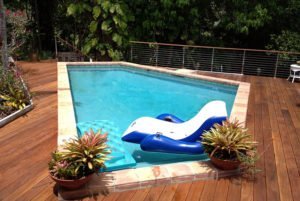
Color is a sticky subject for lumber dealers. More specifically, matching the color of different boards of the same species. Wood is an organic product. Maybe that goes without saying, but in today’s engineered product world, it is important to realize that wood is unique.
It isn’t poured or extruded or dyed or infused or crackle painted (at least I hope not). Every piece you get is different. Sure, it has a general appearance from one species to the next, and I can look at a board and tell you it is Cherry, Teak, Utile or Ipe.
But amongst an entire pile of any of those species, you will find differences in color and grain as well as imperfections that make each board unique. Sometimes you will even find an odd board that you can’t identify. Ever seen green colored Ipe, or green colored Walnut? I have, though I didn’t know that’s what they were at first.
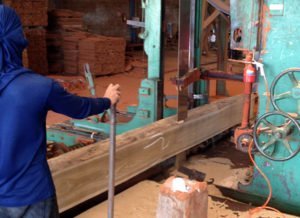 The reality is that many things affect the color of the board: where the tree grew and the local climate, when the tree was felled, how it was sawn and dried, when or if it was milled, and how and for how long it was stored. With so many variables in play, it is actually hard to believe that color matching is even possible.
The reality is that many things affect the color of the board: where the tree grew and the local climate, when the tree was felled, how it was sawn and dried, when or if it was milled, and how and for how long it was stored. With so many variables in play, it is actually hard to believe that color matching is even possible.
I bring this up because it seems that all any dealer or builder ever shows in their marketing are the glamor shots of perfect boards, in their final finished state. The implication is that if you buy from them, your projects will look the same. The untold part is the work that goes into it to get to that point.
You see this the most with decking projects, and this is where the biggest frustration with different colors comes up the most. Tropical decking like Ipe and Cumaru are sold ready to install. I’ll talk more about that in a future article. For now, let’s look at all the things that can affect the color of your decking boards, and what you can do to get the best color match for your project.
Grain Plays a Major Role in Color
This is probably the biggest factor behind color variation. You will find boards that came from the same tree exhibiting different colors, because of how that board was cut and where it was located in the tree.
In some cases, you can look at 2 boards of the same species and be convinced that they are different, because the grain has altered the color so much. What it really comes down to is density. A different cross section of the log will be more or less dense, and therefore, it will reflect light differently which will change its color completely.
In a perfect world, trees would be perfectly straight grained and all the fibers would be parallel. Of course, then we would have lumber that looks like plastic, so I’m glad this isn’t a perfect world. The reality is that you will find all kinds of density variations as the grain flows over and around knots or shifts to stabilize the tree against wind or gravity.
Faster or slower growth periods will spread the rings apart (less dense) or group them closer together (more dense), and often both will occur in the same tree as the climate varies from year to year. Figured grain caused by any number of factors will add curves in the grain, exposing end grain on the face to give us wonderful curly and quilted effects. In these figured situations, just shifting your perspective from one side of the board to another will change the look completely.
Then there is the grain which we impose on the board by how we saw it from the log. Whether the board is near the center of the tree or on the periphery will change the color and the appearance of the fibers.
Rift or Quarter sawn boards show that “perfect” parallel grain which I’ve talked about before, but just since Mother Nature likes to keep us honest, she adds in other variations. Flecks of denser material called Medullary Rays now show up on the face, and this parallel grain will sometimes present as a uniformly darker board and sometimes you get a striped appearance.
I should also mention that quartersawn boards can be prone to tearing when planed due to uncertain grain direction… yet another thing that changes color.
The Elements Are Harsh
Wind and rain and sun are relentless and will change the color of a board. No matter what precautions you take, the sun will always win and fade your boards to a silvery gray. Of course, this happens gradually, and variation in color will occur randomly during the process.
When a board is freshly milled, you will find a great deal of color variation, as freshly exposed surfaces are exposed to the air and begin to dump their additional moisture. Chemical changes occur in the board, as well, which change the color.
Depending on how freshly milled your boards are, they may appear very different in color, but the good news is that they will mellow over time to a more homogenous hue. Just lay them out in the sun, and they will darken. Just remember that wood gets tan lines just like us.
Climate and Region Provide Local Color
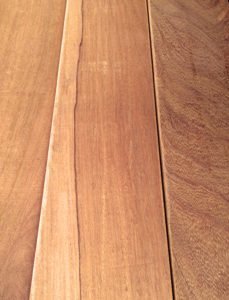
Most of this is based on the board’s density, but you will also find some regions producing more mineral streaking, or in some instances, temporary soil chemistry changes due to flooding or fire.
You will find dark streaks and sometimes stark color changes on either side of a weather event.
What Color are You After Traveling Several Thousand Miles
Tropical decking starts life on an epic journey peppered with killer layovers and poor accommodations. And like any of us on a long, uncertain journey, the boards are sweating the whole way.
Between the freshly sawn and/or milled boards dropping moisture and the heat of a metal shipping container or the muddy rainy season roads, these boards get dirty, wet, and stained with baked on “stuff.”
Then these same boards may sit in a port getting moved around for days by forklifts and set in who-knows-what, only to be moved to a lumber yard for the same treatment. The color variation you find now might just be cured with a good bath!
Should I Just Give Up on Color Matching
So what is one to do about getting one of these “glamor shot” decks that you see on websites and in magazines. How do they do it, and how do I get some of that beautiful lumber?
A good dealer is a good place to start. If your dealer has a clear knowledge of where each pack of lumber came from, then some of the regional differences can be weeded out. Even then, as illustrated above, color variation will still be present.
Don’t rely on grade, because color isn’t mentioned in any grading system, and anyone who tells you that buying “top grade” will mean better color consistency is feeding you a line. When it comes to tropical decking, I think you will find that there really isn’t such a thing as B grade or less than top grade. The B grade stuff doesn’t get exported in the first place. But that’s another story for another time.
You can specify color matched lumber from your dealer. They will either laugh at you, or they will charge you for it. Anything can be done for the right price, I suppose. But look at the subtext to all of the variables above, and you will find your answer. Simply put, the best thing you can do to get a good color match in your decking is:
- Buy extra
- Exercise plenty of patience
- Add elbow grease
Most of the color variation you see in your decking boards will mellow out, if you let it sit in the sun for bit, clean off the mud, and/or do a little sanding. Also, when you apply a deck oil, you will be surprised how that can unify the color of your deck.
You will always find an anomalous board here and there, so flip it over and check the other side. You may find a good color match hiding just on the other side. And if not, let that face sun tan a bit first, then check. Or, set that board aside and choose from some of the others you have.
This is where the time tested adage of “buy 20% more than you need” comes into play. Frankly, I think this percentage goes up the larger your project. Think about it, with more volume comes more odd ball boards, even if the odd ball percentage stays the same. So you will need more options. It doesn’t necessarily mean that those rejected boards won’t get used, but perhaps they will work better in a less noticeable space, or you will find more boards of a similar hue with which your oddities will blend.
Wood is organic, and it is going to look different. Isn’t that exactly why we all love it so much? In the end, embrace the color the variation and use it to your advantage to create a unique finished project.
Learn more about the lumber industry:

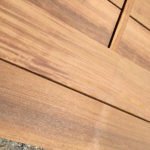
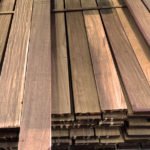
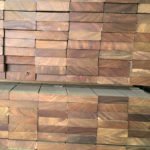
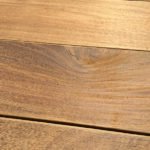
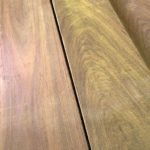
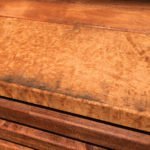
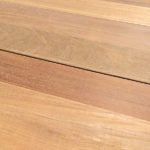
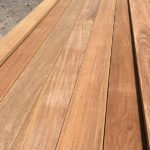
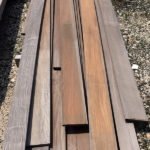
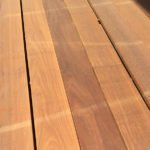
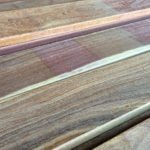
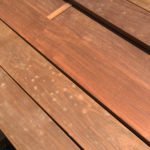
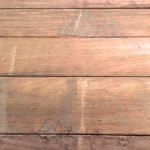
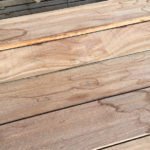
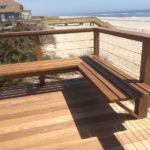
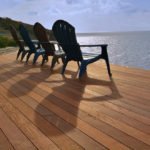
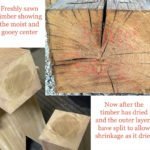
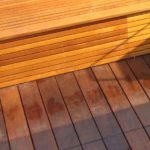
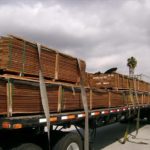
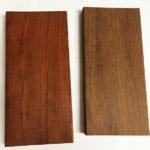


Great article, Shannon!
As a seller of mostly high-grade Western Red Cedar products, I can tell you that the same situation exists with the softwood species. As a salesman, I cringe when I hear the words “color matching”. Cedar, in particular, can vary GREATLY in color from piece to piece. Very light blonde to chocolate brown – some boards even have a ‘striped’ effect with huge color variation within the board itself. My advice to our customers is the basically the same as yours – buy extra. The striped boards, in particular, are a great way to transition from a darker board to a lighter board – in a paneling application for instance. So buy extra, and take the time to sort your boards out prior to installation & the result is a celebration of the natural variation in a natural product. Thanks again for the timely article, Shannon.
-Allan
Cedergreen Forest Products